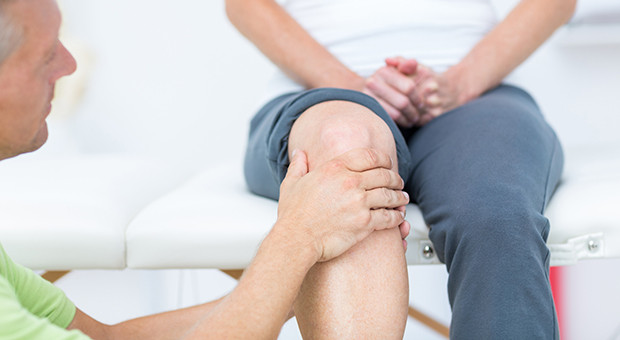Joint aches and pains are among the most common complaints doctors hear. When it comes to the knees in particular, there are a few things you can do to prevent problems.
Dr. Robert Gallo, an orthopedic sports medicine specialist at Penn State Health Milton S. Hershey Medical Center, said that while some factors – such as age and genetic predisposition – can’t be changed, there are risk factors you can control.
The first is your weight. Gallo said every step you take puts up to four times your body weight through your knees and up to seven times your body weight through the kneecap.
Studies have tried to determine whether it is purely weight loss that causes improvement to knee pain or the combination of exercise and weight loss. Gallo said there is evidence to support the theory that losing weight can lessen knee pain on its own.
“It’s one of the biggest modifiable risk factors, and one thing that has a big impact,” he said.
Strengthening the quadriceps and hamstrings — as well as the core of your body — can also lessen your chances of an activity-related knee injury.
“People often neglect the core muscles, but they can play a big role because the knee cap connects to the quads and hamstrings which both cross the hip joint,” he said. “They all work together. It’s all about balance.”
When you hit the gym, Gallo recommends using a variety of exercises, including sit-ups, leg raises, and adduction and abduction machines, which can all help strengthen core muscles. Leg presses can be beneficial in building strength, but he suggests avoiding extension machines and exercises where your feet are off the ground. When bending and squatting, it’s best not to go beyond a 90-degree angle to the floor because that can put excess pressure on your knees.
Those who are more active are more likely to injure themselves, but when it comes to running, the benefits and drawbacks for your knees likely cancel each other out.
“Theoretically it would make sense that the impact from running would be bad for your knees, but if you look at all the factors, it’s probably a wash because the people who are running are probably thinner and have more muscular thighs,” he said.
Gallo said the types of knee problems he sees depend on the age of the patient. Teens sometimes have inflammation of the growth plate, while 20-somethings tend to come in with acute traumatic injuries such as ACL tears. Meniscus tears come into play more frequently in the 30s and 40s, while older patients complain of osteoarthritis.
Treatment for a bum knee depends on the cause and severity of the problem. Gallo suggests seeing a doctor anytime the knee is acutely swollen or when you can feel a ‘pop.’
“As long as you can still bear weight on it, most times you can wait a couple of days and see if the pain resolves,” Gallo said. “But if the pain or swelling hasn’t gone down in 48 hours, make an appointment.”
As for whether supplements can help prevent knee injuries, the jury is still out. Gallo said some of his patients take glucosamine, chondroitin or fish oil and find it helps.
“There is no clear evidence that demonstrates they make a long-standing difference,” he said. “But they appear to be relatively well-tolerated, so it often doesn’t hurt to try them.”
Learn more:
The Medical Minute: Preventing ACL injuries in young athletes
The Medical Minute: Avoid overexertion injuries from “spring fever”
The Medical Minute is a weekly health news feature produced by Penn State Health Milton S. Hershey Medical Center. Articles feature the expertise of faculty physicians and staff, and are designed to offer timely, relevant health information of interest to a broad audience.
